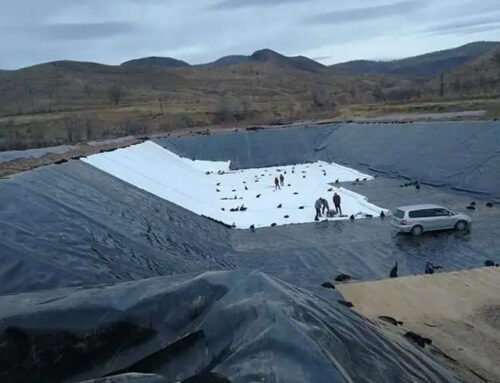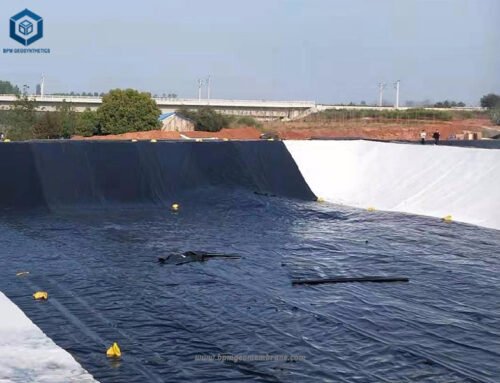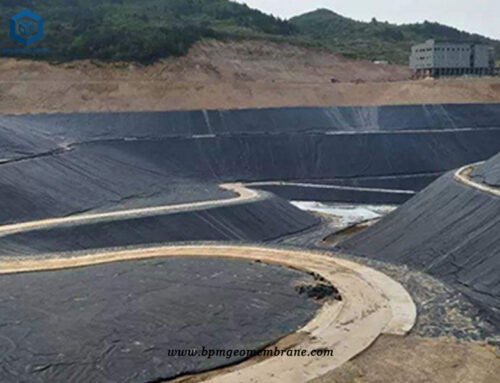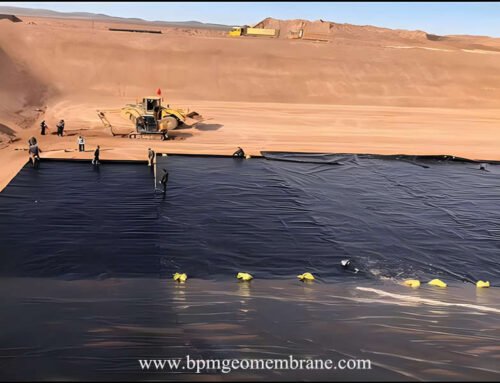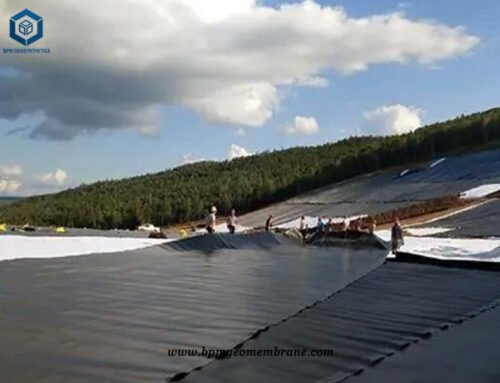Best pond liner to use, also knwon as geoemembrane pond liner, is a kind of anti-seepage and moisture-proof waterproof building materials, and its anti-seepage performance mainly depends on the anti-seepage performance of plastic film.
BPM Geomembrane is the leading geomembrane liner manfuacturer and supplier, we wholesale geomembrane with custom size and thickness at best factory price.
1. What Is The Best Pond Liner?
The best pond liner depends on various factors such as the specific needs of the project, the size and shape of the pond, and personal preferences. However, HDPE (high-density polyethylene) pond liners are often considered one of the best options due to their durability and longevity.
HDPE pond liners are made from a high-density polyethylene resin that is reinforced with additives such as carbon black masterbatch, anti-aging agents, antioxidants, ultraviolet absorbers, and stabilizers. These additives enhance the liner’s resistance to environmental factors such as UV radiation, chemicals, and temperature variations.
Compared to cheaper PVC (polyvinyl chloride) liners, HDPE liners offer superior durability and longevity. They are more resistant to punctures, tears, and degradation over time. HDPE liners are also less prone to cracking or becoming brittle in cold temperatures, making them suitable for various climates.
Best pond liners is their versatility. They can be used for a wide range of applications, including solid waste containment, mining, and water containment. HDPE liners are commonly used in agricultural ponds, decorative water features, and larger-scale commercial or industrial projects.
When choosing the best pond liner, it’s essential to consider factors such as the size and depth of the pond, the intended use, the surrounding environment, and budget constraints. Consulting with a professional or experienced supplier can help determine the most suitable pond liner for a specific project.
2. Case Analysis of Best Pond Liner To Use for Reservoir Project in Brazil
- Location: Brazil
- Product: 1.5mm HDPE Best Pond Liner To use
- Project: Large Reservoir Project


3. Issue of Best Pond Liner to Use for Reservoir Project in Brazil
The water storage capacity of the reservoir is 0.7Mm³, which is impounded by the filled road embankment with a height of 9m and a length of 280m. The lack of cohesive soil material on the project site meant that the dam design was based on artificial waterproofing elements, including concrete core walls and geomembranes. Early contractor engagement is client-initiated to provide constructability, schedule, and cost inputs during the conceptual design phase. A dam containing an upstream best pond liner to use was ultimately chosen for economic and constructability reasons.
The dam uses an upstream sloping HDPE geomembrane attached to the upstream toe by a concrete base on the bedrock. The geomembrane is covered with a padded and torn transition layer to provide better protection against puncture and aging.
The project site is located in an area of beautiful natural beauty. The visual impact of the dam and the restoration of the surrounding area after construction are important factors for the promotion of the scheme. Planning permission was granted in June 2010 and ground surveys, profile design and energy yield studies were completed by the end of 2010. Project funders accepted the “financeable” design in early 2011, and construction began almost immediately thereafter.
A published 1:50,000 geological map of the area shows the solid geology of the Jura Quartzite Formation. the entire project. Quartzite ranges from weak to very strong, grey angular, highly fractured rocks with orange/yellow staining on some joint surfaces. Basalt is a very solid dark grey/black rock with extensive discontinuities.
4. How To Use BPM Best Pond Liner Brazil for Reservoir Project
To use BPM’s best pond liner for a reservoir project in Brazil, follow these guidelines:
4.1 Embankment Design
The embankment should have a top width of 3.5m and be set at a level of 138.0mOD. The upstream and downstream slopes should have a ratio of 1 to 2.5. Consider placing landscaping fill on the lower right side to minimize the visual impact of the embankment.
4.2 Excavation and Disposal
Remove all peat and organic materials from the dam’s footprint. Temporarily dispose of them at a nearby location through end dumping. The temporary cutting slope of the peat should be stable at approximately 1 to 1 throughout the construction period.
4.3 Waterproofing Element
The waterproofing element comprises an upstream sloping geomembrane covered with graded granular fill and ripped soil. Attach the BPM best pond liner to a concrete toe base cast on the prepared rock surface. The toe base should have a sloped concrete wedge, similar to a CFRD (Concrete-Faced Rockfill Dam) toe base, providing a flat waterproofing surface to which the geomembrane can be attached.
4.4 Anchor Trench
Fix the best pond liner on top of the anchor trench. The anchor trench helps secure the liner in place and prevents uplift or displacement.
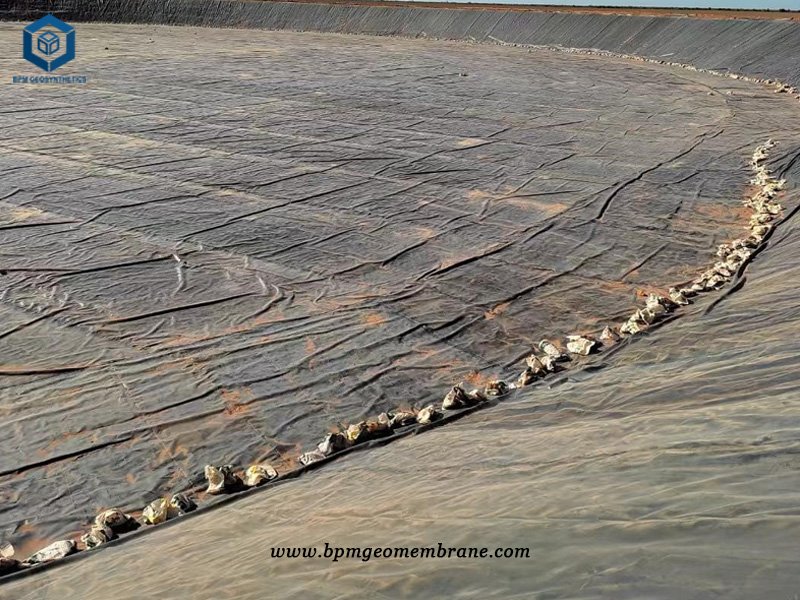
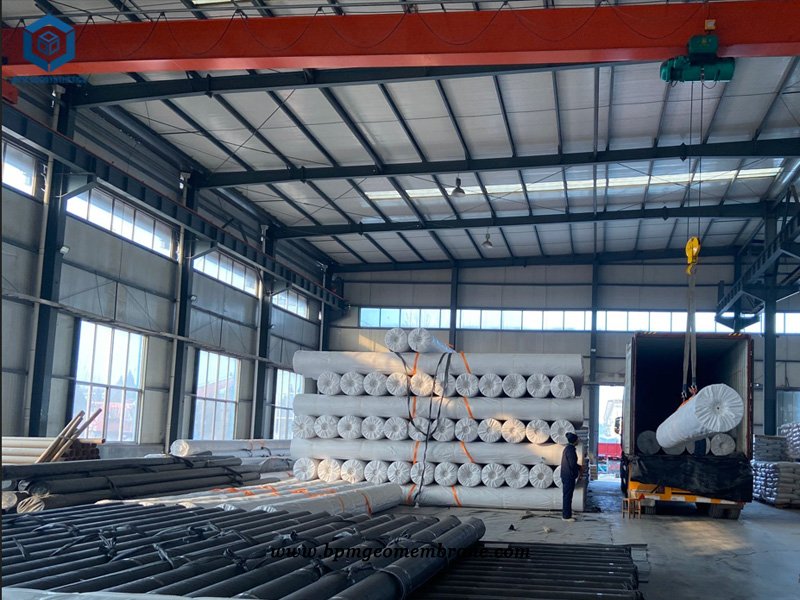
5. How To Install Best Pond Liner To Use for Reservoir Project in Brazil
A 1.5mm thick dual texture HDPE geomembrane lining was chosen for the waterproofing elements. The total coverage area is approximately 50000 square meters, with mechanical seals on the upstream toe base and all ancillary structures. Special details were required to secure the geomembrane to the spillway and intake works to accommodate differential settlement of embankment fill and rigid structures on bedrock. Anchoring of the top is provided by grinding the geomembrane into the anchoring trench. The upstream embankment face was prepared by trimming and compacting the slope with vibrating plates mounted on heavy excavators. This produces a regular surface free of potholes and angular fragments of quartzite. The surface was partially masked with sand to create any local irregularities, and a 300 g/m2 “felt” type geotextile was placed on the surface, the geomembrane was spread out and fastened to the toes and tops. The geomembrane is weighed using a temporary sandbag until securely fastened and welded.
The best pond liner is supplied in 7.5 m wide rolls and all field welds are made using an automatic wide wedge welder to create double seam welds, all air tested at 2 bar pressure.
Demonstrate that the contractor’s backfill and compaction methods do not adversely affect the integrity of the geomembrane. A section of the geomembrane was backfilled and later excavated to assess the condition of the geomembrane. The tests showed no signs of puncture or breakage and the contractor’s method of work was accepted. The geomembrane was installed in two installments to accommodate the contractor’s river diversion sequence.
Due to the relatively short length of the membrane, installation and welding were very quick, although work was temporarily suspended during high winds and rain for safety reasons.
About BPM Geomembrane
BPM has been specializing in delivering one stop geosynthetics products and solutions to worldwide customers since its foundation in 2007. BPM had provided many types of effective and state of the art geomembranes, geotextiles, geocells, geosynthetic clay liners (GCLs), drainage boards, geogrids to over 81 countries.
BPM is not only manufacturing best quality geosynthetic products but also providing professional design and installation service. OEM, ODM, custom development and fabrication are also available. If you have any questions or inquiries, please contact us, we will reply as soon as possible.

